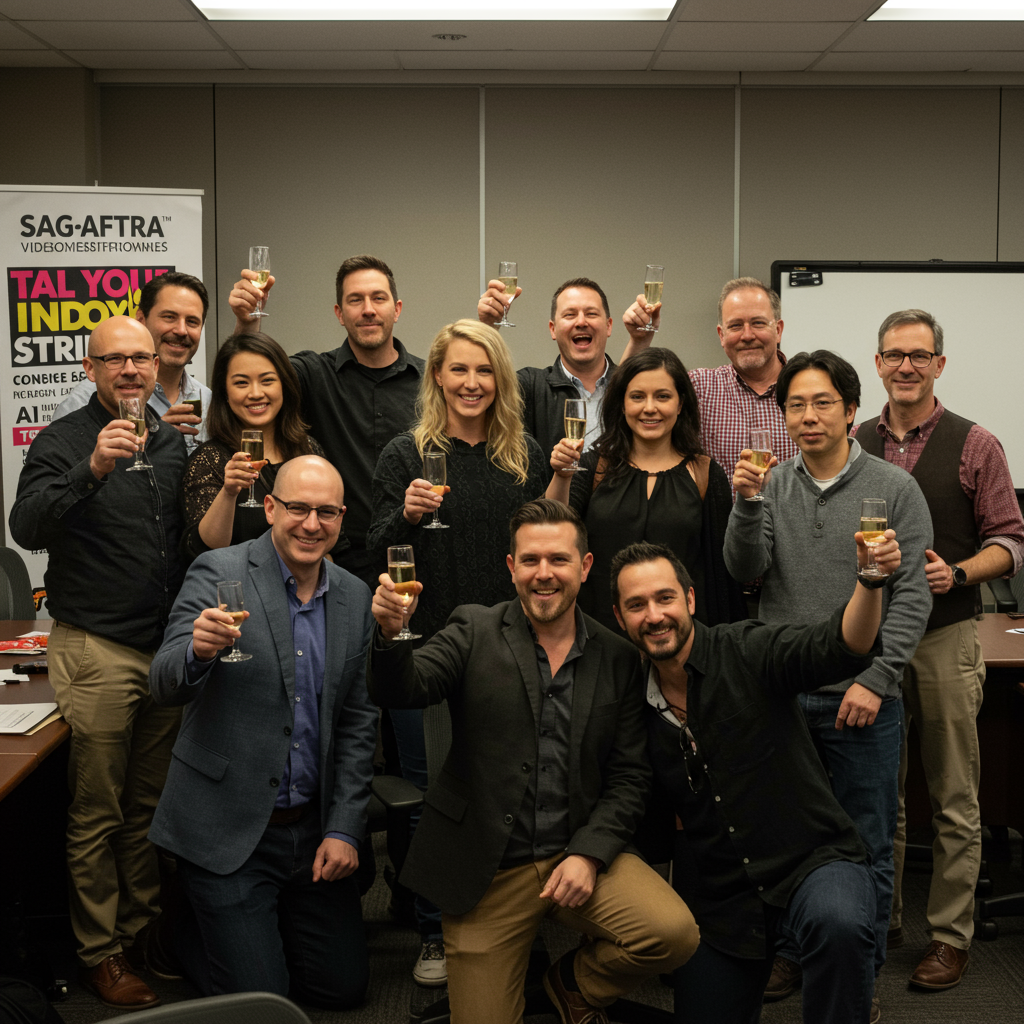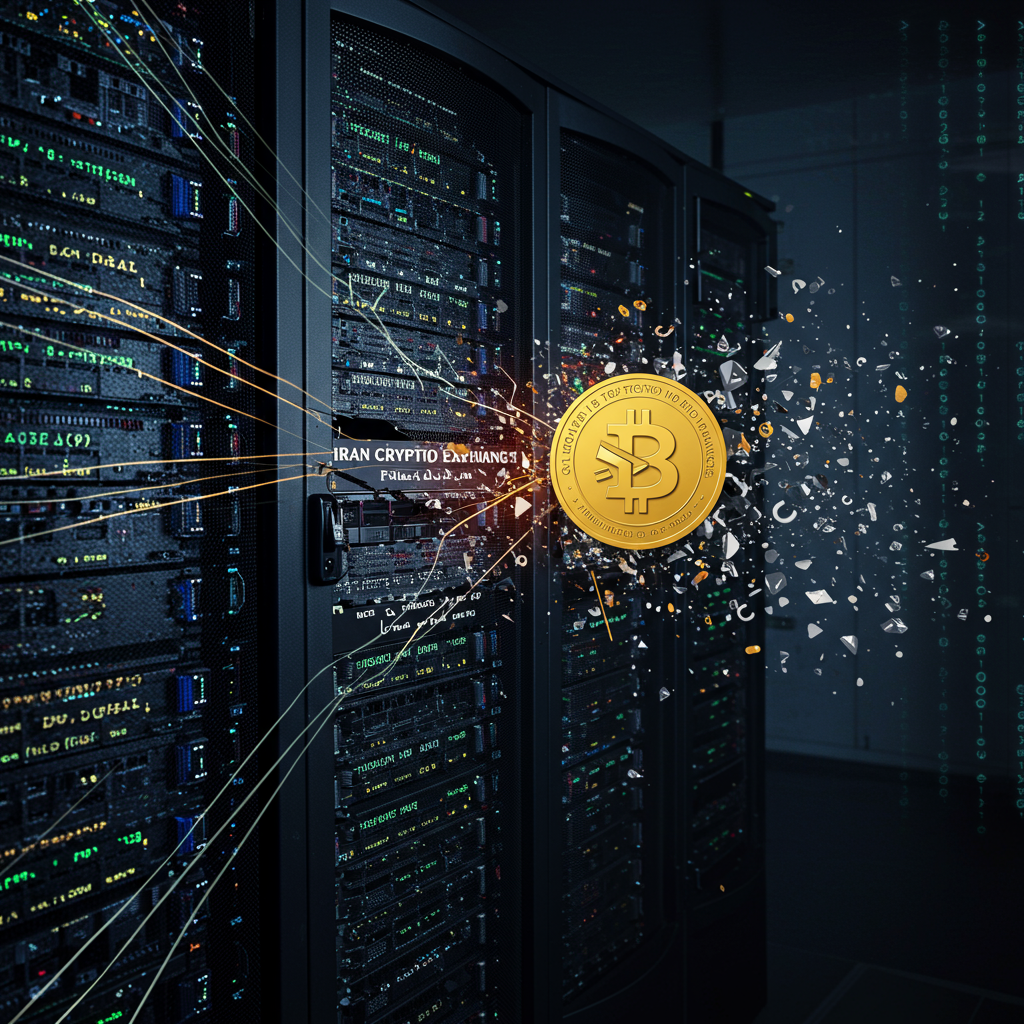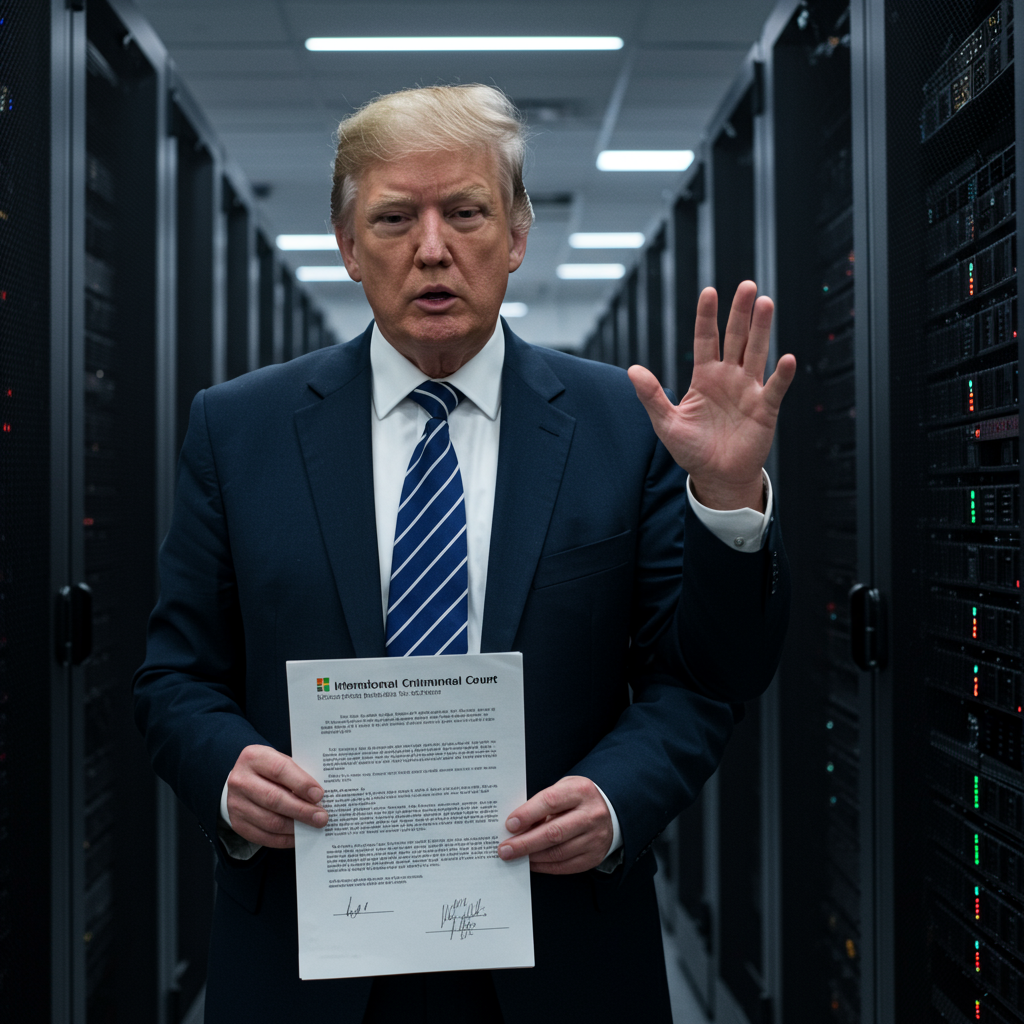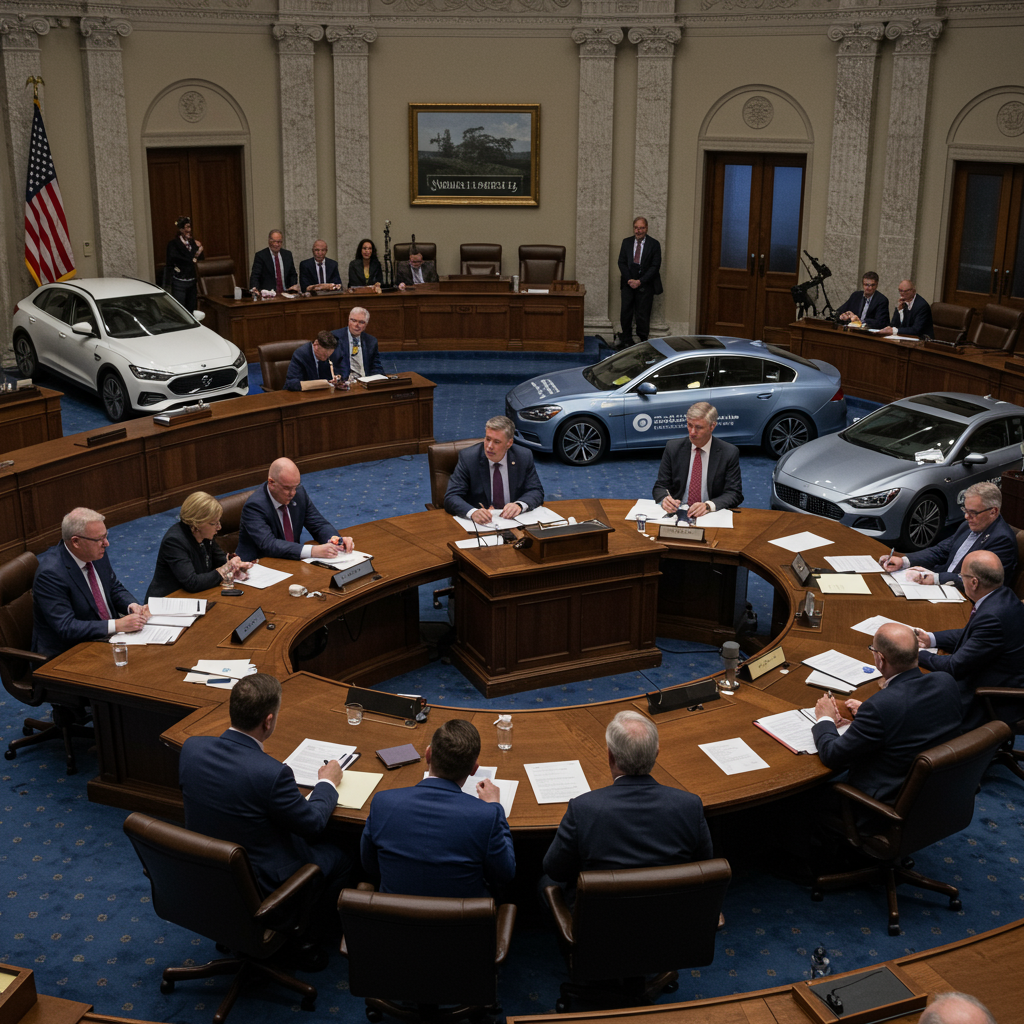A prolonged labor dispute in the video game industry has officially concluded. Members of the Screen Actors Guild–American Federation of Television and Radio Artists (SAG-Aftra) union representing video game performers have voted to ratify a new contract. This crucial agreement includes significant provisions specifically addressing the use of artificial intelligence (AI). The resolution marks the end of an 11-month strike against major game companies.
The strike began in July of the previous year. It followed nearly three years of stalled negotiations. Approximately 2,500 to 3,000 SAG-Aftra members were involved. These performers include voice actors, motion capture artists, and performance capture specialists. Their action targeted 10 of the largest companies in the industry. These included giants like Activision, Electronic Arts, Epic Games, and Take-Two Interactive.
The Core Conflict: AI and Human Performance
The central sticking point throughout the negotiations was the role of AI. Performers expressed deep concerns. They feared companies would use AI to replicate their voices and movements without consent. They also worried about receiving fair compensation for such usage. For motion capture actors, the threat felt particularly acute. Their detailed physical performances were sometimes treated merely as technical “data.” This approach overlooked the skilled artistry involved.
SAG-Aftra argued that any use of digital replicas required explicit consent. They also demanded transparency regarding how the AI models were created and used. Crucially, they sought fair payment whenever a performer’s likeness or voice was used to generate new content via AI. The union stressed that performers were not seeking a complete ban on AI. Instead, they wanted protective “guardrails.” These measures would ensure the technology supplemented, rather than replaced, human talent.
Securing Landmark AI Protections
The newly ratified Interactive Media Agreement addresses these core AI concerns directly. It establishes clear requirements for consent and disclosure. Companies must obtain a performer’s written permission to create a digital replica. This applies specifically when AI is used to generate new performances based on their voice or likeness. The agreement also mandates that performers be informed exactly how these digital replicas will be utilized.
A significant win for the union is the ability for performers to withdraw consent for the creation of new material during future strikes. This provision gives performers crucial leverage. Furthermore, the contract specifies that any time spent by a performer assisting in the creation of their digital replica must be compensated as work time. Employers are also required to provide usage reports. These reports detail how the digital replica was used and how compensation is calculated. Union leadership hailed these clauses as “industry-leading” AI protections.
Beyond AI: Compensation and Safety Gains
While AI was the primary catalyst for the strike, the new contract includes broader improvements for performers. The agreement delivers substantial wage increases. Immediately upon ratification, performers receive a compounded pay raise of 15.17%. This initial boost will be followed by additional 3% increases annually over the next three years. One source suggested the cumulative increase could reach over 24%.
The contract also modifies overtime rates for performers earning above the standard scale. The new maximum overtime rate is set at double scale. Contributions made to the AFTRA Retirement Fund for health and retirement benefits will also see an increase. Contributions rise from the current 16.5% to 17% immediately. A further increase to 17.5% is scheduled for October 2026. Additionally, the agreement incorporates enhanced health and safety measures, addressing other key concerns raised by the union.
Voices from the Front Lines
Veteran voice actor Ashly Burch was a prominent advocate for the strike. Known for roles like Tiny Tina in Borderlands and Aloy in Horizon, she spoke about the performer’s perspective. Burch emphasized the need for consent, transparency, and compensation regarding AI. She pointed out that AI posed a potentially greater threat to voice and motion capture performers than actors in film and television. The unique nature of performance data in games made this a critical issue.
Burch cited a leaked AI prototype of her character Aloy as a moment that highlighted the stakes. Fan reaction to the AI model was overwhelmingly negative. This response reinforced the performers’ belief that audiences value genuine human performances. Burch’s own work outside games reminded her of the unique contributions human artists bring. She argued that the risk of AI was losing these “interesting, evocative performances” that enrich interactive experiences.
The Strike’s Impact and Scope
The 11-month strike was described by union leaders as “grueling and excruciating.” Its impact was significant for performers. Many in the industry work on short-term contracts across multiple projects. The loss of income during the dispute was heavily felt. Voice actor Robbie Daymond highlighted the “real human impact” of such a long work stoppage. He noted awareness of performers whose finances took a serious hit.
Ray Chase, another veteran voice actor, emphasized the particular hardship for motion capture specialists. While voice actors might find work outside the video game sector, motion capture actors’ livelihoods are uniquely tied to this industry. Chase referred to these performers as “heroes” for their resilience throughout the long strike. The dispute primarily affected US-based projects and talent. It did not halt the entire industry. Some companies signed interim agreements with SAG-Aftra. These deals addressed AI concerns and allowed work to continue. Daymond and Chase themselves utilized such an agreement for their game Date Everything!.
A Peaceful Resolution?
Both union leadership and company representatives expressed relief at the agreement’s ratification. SAG-AFTRA president Fran Drescher praised the negotiating team’s leadership. She specifically highlighted the significant progress made on AI protections. Duncan Crabtree-Ireland, SAG-Aftra’s National Executive Director, hoped members would see their sacrifices as worthwhile given the contract’s gains.
A spokesperson for the video game companies stated they were “pleased” with the approval. They reiterated that the agreement included “historic wage increases, industry-leading AI protections, and enhanced health and safety measures.” While the strike was difficult for all involved, the successful ratification marks a formal end to the dispute. It establishes a new framework for performer rights and compensation in the evolving landscape of video game production, particularly concerning AI technology.
Frequently Asked Questions
What are the key AI protections in the new video game actors’ contract?
The new SAG-Aftra contract for video game performers includes several critical AI “guardrails.” Companies must obtain a performer’s explicit written consent before creating a digital replica using AI. They must also fully disclose how that replica will be used. Performers retain the right to withdraw consent for the creation of new material during future strikes. The contract also requires compensation for time spent creating digital replicas and provides usage reports detailing their application and calculating payment.
How does the new SAG-Aftra deal improve compensation and safety for video game performers?
The ratified agreement delivers significant pay increases. Performers receive a 15.17% compounded wage increase immediately. Further 3% raises will follow annually for the next three years. The deal also modifies overtime pay for overscale performers, setting the maximum rate at double scale. Contributions to the AFTRA Retirement Fund increase from 16.5% to 17% initially, rising to 17.5% later. Additionally, the contract incorporates enhanced health and safety measures for performers on set.
What does the end of the video game actors’ strike mean for the future of AI in games?
The resolution of the strike sets a precedent for how AI will be handled in the industry. The new contract establishes that AI cannot simply replicate a performer’s work without their explicit consent, transparency about usage, and fair compensation. This framework aims to ensure AI tools are used ethically and do not unilaterally replace human talent. However, performers and union leaders acknowledge the technology is evolving. Vigilance and continued engagement will be necessary to ensure the “guardrails” are effective long-term and built upon as AI advances.
The successful ratification of the new Interactive Media Agreement brings a significant period of labor unrest in the video game industry to a close. After nearly a year on strike, video game performers have secured a contract that addresses their most pressing concerns, particularly regarding the future use of artificial intelligence. The deal provides crucial protections around consent, disclosure, and compensation for digital replicas. It also delivers substantial gains in wages, benefits, and safety. While the strike had a real human cost for many involved, the ratified agreement represents a hard-won victory for performers. It establishes a foundational framework for navigating the complexities of AI in interactive media moving forward.




